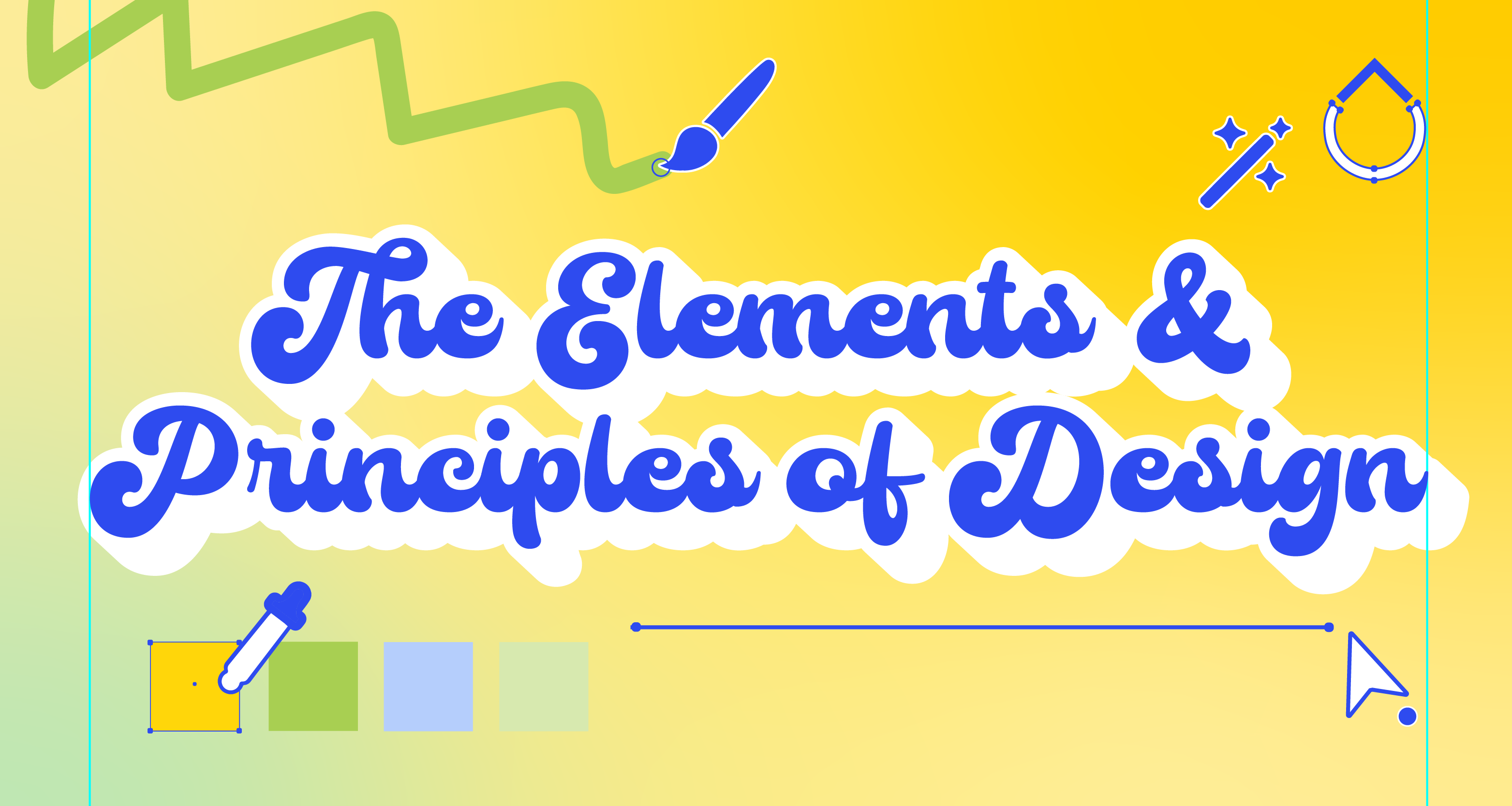News

The Dynamic Interplay Between The Elements and Principles of Design
Design is a fascinating language where various elements and principles come together to create a visual product that translates a concept or idea.
While creativity is an important factor in the language of design, understanding the basic knowledge surrounding its elements and principles is essential for creating impactful compositions that are both effective and creative.
For starters, it is important to identify and distinguish how the principles of design are used to visually organize the elements of design.
The elements of design are the fundamental building blocks that form the visual language of art. They include line, shape, color, texture, value, and space.
The principles of design are a set of guidelines that help designers create effective, harmonious, and aesthetically pleasing visual compositions. There are various interpretations of these principles, but most experts agree on the following fundamental principles: balance, contrast, emphasis, unity, proportion, movement, repetition, and rhythm.
The main difference between the two is that the elements of design are tangible and observable components that form a composition, while the principles of design provide the conceptual framework for organizing and manipulating these elements effectively.
In this blog post, we will revisit the dynamic interplay between the elements and principles of design, expanding upon our previous exploration as we dive deeper into six key design principles.
Visual balance
The principle of visual balance is essentially a sense of weighted clarity that is created in a composition. The three basic forms of visual balance are: symmetrical, asymmetrical, and radial. To achieve visual balance, you will distribute various design elements such as objects, colors, texture, and space, to achieve one of the primary types of balance.
The usage of positioning can be a simple and easy way to achieve balance in design. The principle is to place large elements on one side and balance it out by placing smaller objects, such as texts, on the opposite side. This establishes a dynamic distribution of visual weight and fosters a sense of equilibrium and stability.
Contrast
Contrast, another fundamental principle of design, addresses the notion of dynamic tension between the visual elements that exist within a composition. Contrast can be achieved through stark differences in color, size, shape, value, and texture. It can be used to create specific effects, and emphasis, and add visual appeal.
By experimenting with contrasting color hues, shapes, sizes, textures, and typography, you can create more exciting compositions. It’s a great way to grab attention, control the visual flow and keep viewers engaged.
However, adding too many variations can become confusing. As with most of the different elements of design, it’s all about striking a balance.
Emphasis
Emphasis is commonly used to guide a viewer’s eye and establish hierarchy within a design. Manipulating elements such as color and shape can help emphasize the focal points of your design and communicate its importance.
For example, if you are creating a poster for an upcoming concert, you could make the name of the headlining artist significantly larger than the other text on the poster. Additionally, you could use bright colors for the artist’s name, against a more subdued background, further emphasizing its importance.
Unity
Unity only occurs when all the various elements within a design coexist to form a holistic and pleasing experience for the viewer. Unity is developed both visually and conceptually. Realistically, to achieve unity, you need to ensure that the elements you’ve used have a good reason to be there, that they work together, and that the message or concept you’re trying to display is communicated clearly.
For example, the use of consistent shapes contributes to the principle of unity. By incorporating recurring shapes or patterns, designers can establish a recognizable visual language that unifies different elements within a design. This repetition helps create a cohesive composition, enhancing the overall brand recognition and identity.
Proportion
Proportion is the relationship between two or more elements in a design, particularly their size, and scale of them. This plays a vital role in establishing harmony and balance within a composition.
For instance, if you are working on an advertisement, you may use a large bolded font as the headline so you can ensure the information is easily digestible. Then you could use a smaller more dainty font in the subheading, which will help create a visual contrast with the headline. For the body text, you would want to use a font that is a little smaller but legible. Lastly, you would want to ensure that your CTA is in a slightly larger bolder font in comparison to the body text to grab the attention of viewers. By carefully considering the proportion of font size and styles, you can ensure key information stands out effectively.
Interweaving movement and elements
Similar to proportion, movement relies on the elements to guide the viewer’s eye and create a sense of flow. This principle draws upon various elements of design, such as line, shape, color, and texture, to generate a visual journey.
For example, shapes and forms can be arranged to suggest fluidity or rhythm. Colors, with their varying hues, can evoke different sensations of movement. Textures can be employed to imply motion through their material. Ultimately, the principle of movement can be harnessed to distract and direct a viewer through the use of subtle cues.
The principle and elements of design exist in a symbiotic relationship, each reliant on the other to create impactful and engaging visual compositions. Designers can unlock the true potential of visual communication, conveying messages and narratives that not only have aesthetic appeal but also cohesive impact.